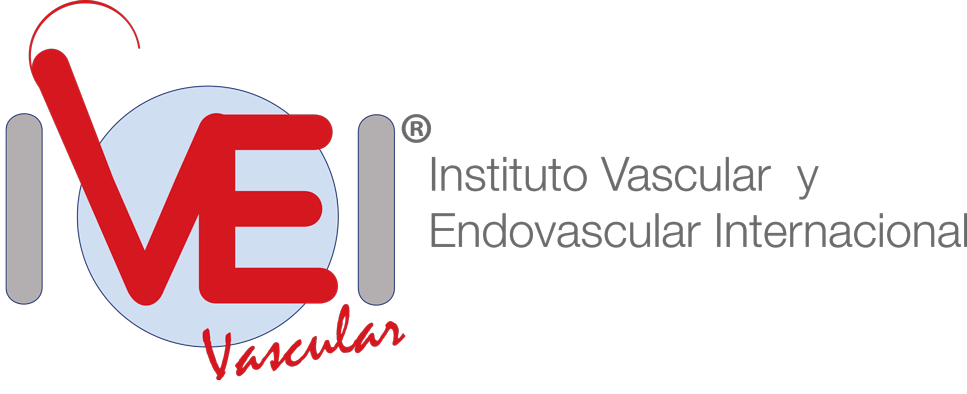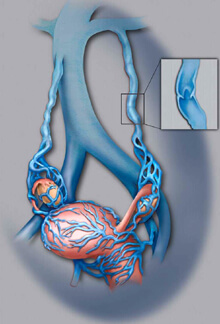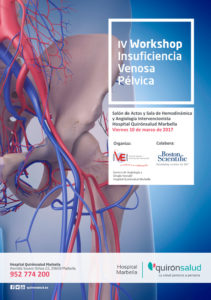Pelvic varicose veins are dilations of the drainage veins at the level of the pelvis, the lower part of the abdomen, which are usually located around the uterus and the adnexa of the reproductive system. Its development is related to functional defects in some of the pelvic venous drainage systems, either at the level of the gonadal veins (uterine or spermatic), the hypogastric veins or both. They are the result of a problem of pelvic venous insufficiency that is frequently in direct or indirect relationship with venous insufficiency in the lower limbs.
Pelvic varicose veins are directly related to what is called “pelvic congestion syndrome” and also to compression syndromes such as compression syndrome of the left renal vein or “nutcracker syndrome”, and compression syndrome. of the left iliac vein or “May-Thurner syndrome”.
The vast majority of patients who can benefit from this treatment are young women, between 30 and 50 years old, who have had 1 or more pregnancies and have heaviness in the pelvis and / or legs, pain or edema in the and may present or not varicose veins of minor entity in the lower limbs or atypical locations (gluteus, posterior thigh area).
Venous embolization focuses on the relief, among others, of the following symptomatology:
Pain and heaviness in the lower abdomen. Pains similar to menstrual but outside the menstrual cycle. Sometimes they can become very disabling and present for prolonged periods, causing even sick leave.
Very latent menstrual cycles, with much pain, abundant bleeding and many days.
Dispaurenia: discomfort during sexual intercourse in women.
Phlebostatic symptoms in the legs such as: heaviness, tiredness, swelling or pain, which typically worsen with the menstrual cycle.
Varicose veins in atypical locations such as the posterior aspect of the thigh, lower region of the buttocks, perineum or even in the genital area.
Through a simple puncture at the level of the arm or the groin we access the venous system. Using guides and catheters we navigate to the key points in the veins of the pelvis. Once the desired location is reached, we take photographs inside the veins using iodinated contrast and X-rays, in order to determine which veins are failing.
When the points of failure are detected, devices called “coils” are placed to occlude the problematic veins. The blood is subsequently drained naturally by alternative circuits.
The treatment is very effective. In 90% of treated women, the symptoms of heaviness, pain and fatigue at the level of the pelvis and, even, at the level of the lower limbs decrease or disappear. Other symptoms such as edema also experience a very significant improvement.
In this sense, IVEI specialists are probably the most experienced in this area in all of Andalusia, presenting success rates both technical and in improvement of symptoms over 90%.
It is a very non-aggressive treatment with a very low complication rate. Migrations of the devices that are implanted occur in less than 1% of cases.
IV Workshop Pelvic Venous Insufficiency
Hospital Quirónsalud Marbella – Hospital Quirónsalud Marbella – Friday, March 10, 2017
The specialists of the International Vascular and Endovascular Institute (IVEI) are probably the most experienced in this field in the whole of Andalusia, presenting success rates both technical and in improvement of the symptomatology above 95%.
At the Workshop come angiologists invited by the industry who will actively participate in the practical part with live cases, but the theoretical sessions of the morning can be attended by anyone who wishes.
Descargar el programa PROGRAMA IV workshop IPV Marbella




